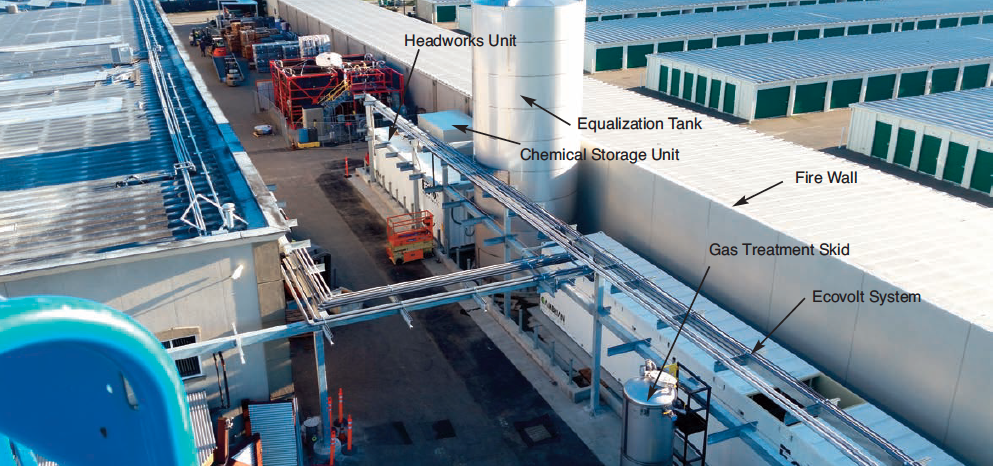
Bear Republic’s Wastewater Solution Is Window into the Future
SERVICES: Construction, Start-up / Operations
TECHNOLOGY: Anaerobic Digestion/Biogas, Technology Partners, Waste To Energy




…IWS was proactive in taking steps to keep the project on track, was responsive to our changing needs as an active production facility, and had the skill-set to turn-key the project”.
LOCATION: Cloverdale, CA
DESCRIPTION: Integrated Water Services, Inc. (IWS) has recently completed the installation of one of the first EcoVolt Reactor systems in California at the Bear Republic Brewery in Cloverdale which treats high-strength brewery wastewater.
The EcoVolt Reactor efficiently treats wastewater while extracting clean energy and clean water, allowing production facilities to both cut wastewater management costs and achieve sustainability goals.
IWS, Bear Republic Brewing (Bear), and Cambrian Innovations (Cambrian), in addition to the project engineers at Summit Engineering, worked closely in addressing design and construction elements to bring the project to a successful completion.Bear’s EcoVolt solution, comprised of one headworks unit controlling two anaerobic EcoVolt Reactors, leverages a process called “electromethanogensis.” In this process, electrically-active microbes efficiently treat high-strength wastewater, allowing for discharge to the city in compliance with local standards, and generate a high-quality, renewable biogas. A combined heat and power turbine (CHP) converts the methane into electricity and heat for onsite use, significantly reducing Bear Republic’s reliance on natural gas.
The treatment equipment for the project was provided by Cambrian, and IWS provided all the site construction which included extensive concrete work, civil, mechanical, electrical and controls systems for this innovative project which included a variety of site improvements and facility integration components.
Bear is a craft brewer based in Cloverdale, CA that produces 82,000 barrels per year of its beer with distribution throughout the US. Bear Republic was growing rapidly and placing an increasingly high BOD load on the City of Cloverdale’s wastewater treatment system. The EcoVolt system allowed Bear Republic to reduce the biological loading on the City’s wastewater system and at the same time reclaim water for internal uses and generate electricity and heat.
A typical brewery will use up to 7 gallons of water to make 1 gallon of beer. Bear Republic has worked hard to achieve a 3.5 to 1 water use to beer produced ratio in the recent drought stressed region of California. The new treatment system will provide 25 percent of the facility’s hot water heating and close to 50 percent of its electrical needs while enabling them to re-use up to 25% of the water for cleaning and wash down.
Construction of the system included integrating new technology and systems into an operating plant without impacting operations. The specific IWS scope of work included: Installation of concrete containment pads and a 100 ft long by 18 ft high concrete firewall; Installation of a new lift station; Installation of a solids removal system; Installation of two (2) micro turbines and gas flares and integration with the facility’s Electrical Utility services; extensive piping and pipe racks to elevate the transfer and process piping; and site upgrades to allow simpler integration with ongoing operational equipment.
Bear did not have to halt or shut down operations during the course of the project. IWS, coordinating closely with the project team, worked around the ongoing operations and project equipment deliveries, to limit impacts at the Cloverdale Brewery.
Richard Norgrove, Jr., Brewmaster and COO, was impressed with IWS and their ability to work with all the stakeholders to make the project a success. Richard summed it up “IWS played a critical role in bringing together all the pieces of this new technology and integrating it into our existing operation. IWS was proactive in taking steps to keep the project on track, was responsive to our changing needs as an active production facility, and had the skill-set to turn-key the project – which meant they didn’t have to go far to get the answer when issues arose. We would highly recommend IWS for future projects”.
For more information, please click the ‘Contact’ tab to reach out to us.
